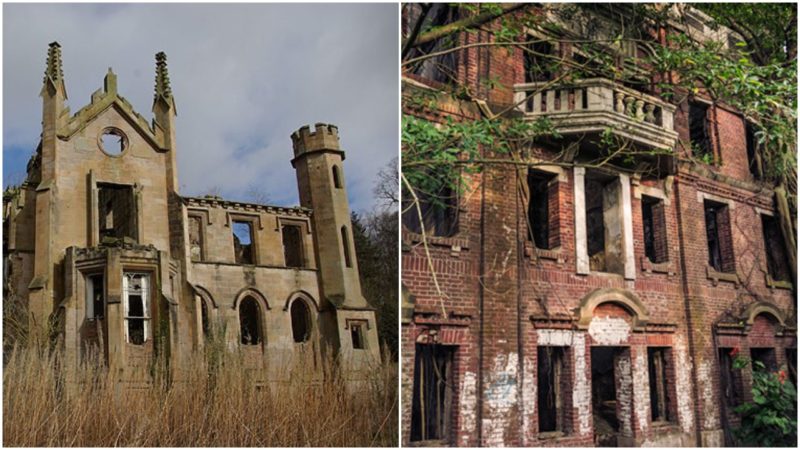Around the word many once opulent mansions have been deserted. The buildings are in sad shape with broken windows, roofs missing and crumbling brickwork. Some have become homes for squatters and animals.
5 Mudhouse Road
One of these formerly majestic homes used to sit on Mudhouse Road near Lancaster, Ohio. Originally the land was owned by Abraham Kagy and Henry Byler, who sold it to Christian and Eleanor Rugh. The building was erected in about 1875. It was again sold in 1919 to Henry and Martha Hartman. The house was inherited by Lulu Hartman Mast upon the death of her father in 1930, and the property remains in the Mast family to this day.
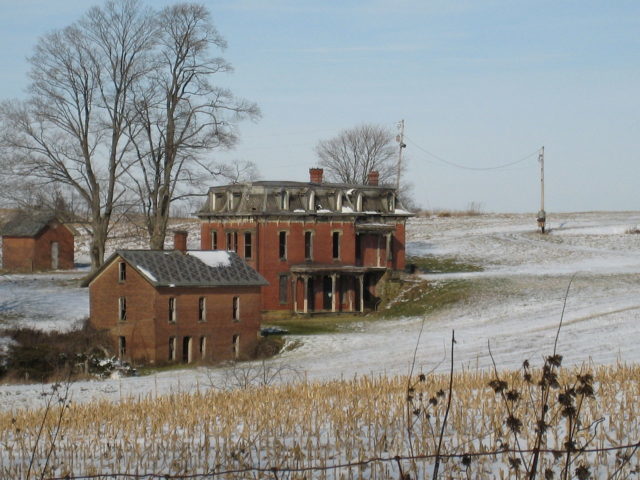
As with most abandoned homes, locals have branded the home as being haunted. Stories of mass murder, children being killed and the like have run rampant for many years.
No one has lived in the home since the 1930s, and the owners have zealously guarded the property, pressing charges on anyone caught trespassing. Up until a fire destroyed the roof and some of the interior, the mansion may have been salvageable, but the Mast family steadfastly refused to sell. They also claimed that it would cost millions to refurbish the house back to a liveable condition and meet standard codes. The house had only partial electricity and had no plumbing.
In September of 2015, the building was demolished. Locals lined the road to watch the old mansion come down. The demolition company attempted to salvage as much as possible, and many of these items are for sale with the family’s permission on amethystandivy.com/mudhouse-mansion
4 Cambusnethan House
In North Lanarkshire, Scotland, another deserted mansion sits forlornly empty. It was designed by James Gillespie Graham and completed in 1820. The Gothic Revival style home, called Cambusnethan House, or Cambusnethan Priory, replaced a Norman-age tower and manor house which had been destroyed by a fire sometime in 1816.
The original home had been surrounded by apple orchards, and it is rumored that a Mr. Paton, a gardener at Cambusnethan House bred a new apple variety called the Cambusnethan Pippin in the mid-1700s.
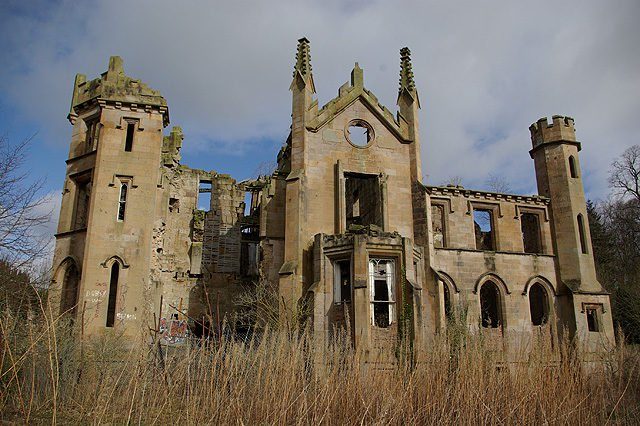
The owners were the Lockhart family, and the building had been in use until 1984 when another fire gutted the interior. The Scottish Civic Trust has listed the property as “At Risk” and in March of 2014 a group calling themselves Friends of Cambusnethan Priory was established in order to raise funds to save this historic structure. Donations can be made, and memories can be shared at www.cambusnethanpriory.com
3 Miranda Castle
Miranda Castle in Belgium was commissioned by the Liedekerke-De Beaufort family in 1866. The architect was an Englishman named Edward Milner who unfortunately passed away before the home was completed.
Reportedly, a French architect named Pelchner completed the building in 1903. The Liedekerke-De Beaufort family had been forced to flee France during the French Revolution and had settled in Belgium.
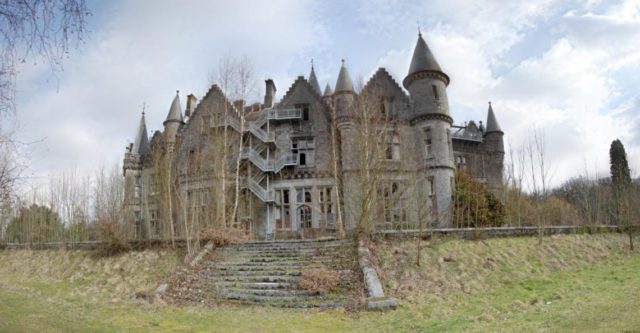
The family remained in the home until World War II when the occupants found themselves in the firing line during the Battle of the Bulge and were again forced to flee when Nazi army officials commandeered the building. In 1950, the National Railway Company of Belgium took over the property to house orphans and chronically sick children until the late 1970s.
It was at that time that the house was affectionately dubbed “Château de Noisy” by the locals. In 1991, the castle was abandoned due to the high cost of maintenance. As with the previous properties mentioned, it has been subject to vandalism and fires. The municipality of Celles has suggested that they are interested in acquiring the property, but again, the owners have refused to sell. In 2013, the family applied for a permit to demolish the building but as of January 2106 the derelict building was still standing and a petition is being circulated on www.change.org to save it from destruction.
2 The Liu Family Mansion of Taiwan
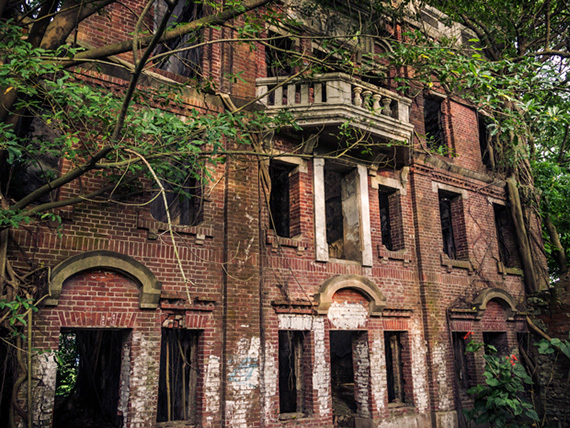
In 1929, the Three-Courtyard Mansion was commissioned by the Lin Ben Yuan family in Banqiao, Taiwan, to serve as a residence for the family. As leaders of the Zhangzhou immigrants, the family used the once stately home as headquarters until the end of the Japanese occupation of Taiwan ended in the 1950s.
There are numerous ghost stories regarding a suicide of a servant to the family and Japanese Imperial soldiers who occupied the building during the Japanese occupation and were wiped out during a battle on the property. Nearby trees have begun to encircle the hollow, abandoned mansion with roots and branches attempting to reclaim the land back into the jungle. Explorers have been visiting the area for so long that one ingenious entrepreneur has built a coffee shop called the Haunted Café next door to capitalize on the tourist trade. There are no plans to demolish the old mansion, and the property owners seem to welcome explorers and tourists.
1 The Tyrone House
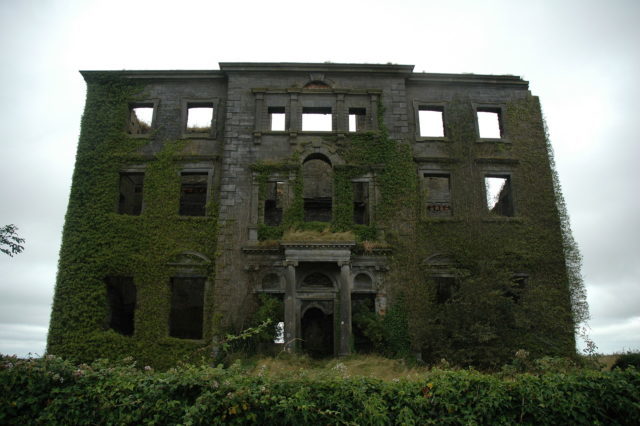
The Tyrone House, County Galway, Ireland was designed in the Palladian style by John Roberts of Waterford and built in 1779 for Christopher St. George, whose family owned a large tract of property in Kilcolgan in the 17th and 18th centuries. Originally, the entry hall boasted a life-size white marble statue of the second Lord St. George, dressed in the fashion of a Roman emperor and positioned beneath the St. George family crest.
Surrounded by fruit orchards, rose gardens, grape vineyards, and a deer sanctuary, the Tyrone house signified classical Irish design. The St. Georges also bred horses and were the founders of the Galway Races. Eventually, the St. George family left the home after clearing out the valuables which were distributed among family members.
By 1912, the manor house had already begun to decay. In the 1920s, during the Irish War of Independence, the Irish Republican Army destroyed the interior to keep it from being used as an infirmary by the Royal Irish Constabulary Special Reserve. There is a story that the elderly caretaker who was bedridden and unable to flee was taken, along with his bedroom furniture and bedding, to an outbuilding used as an office before the building was torched.
In the 1970s, the Tyrone House caught the attention of the Irish Georgian Society, but their attempt at purchasing the estate fell through. In 2004, the Galway City Council decided that the building would be purchased under a mandate similar to Eminent Domain, but the Irish government has yet to offer any funds to purchase the mansion.
